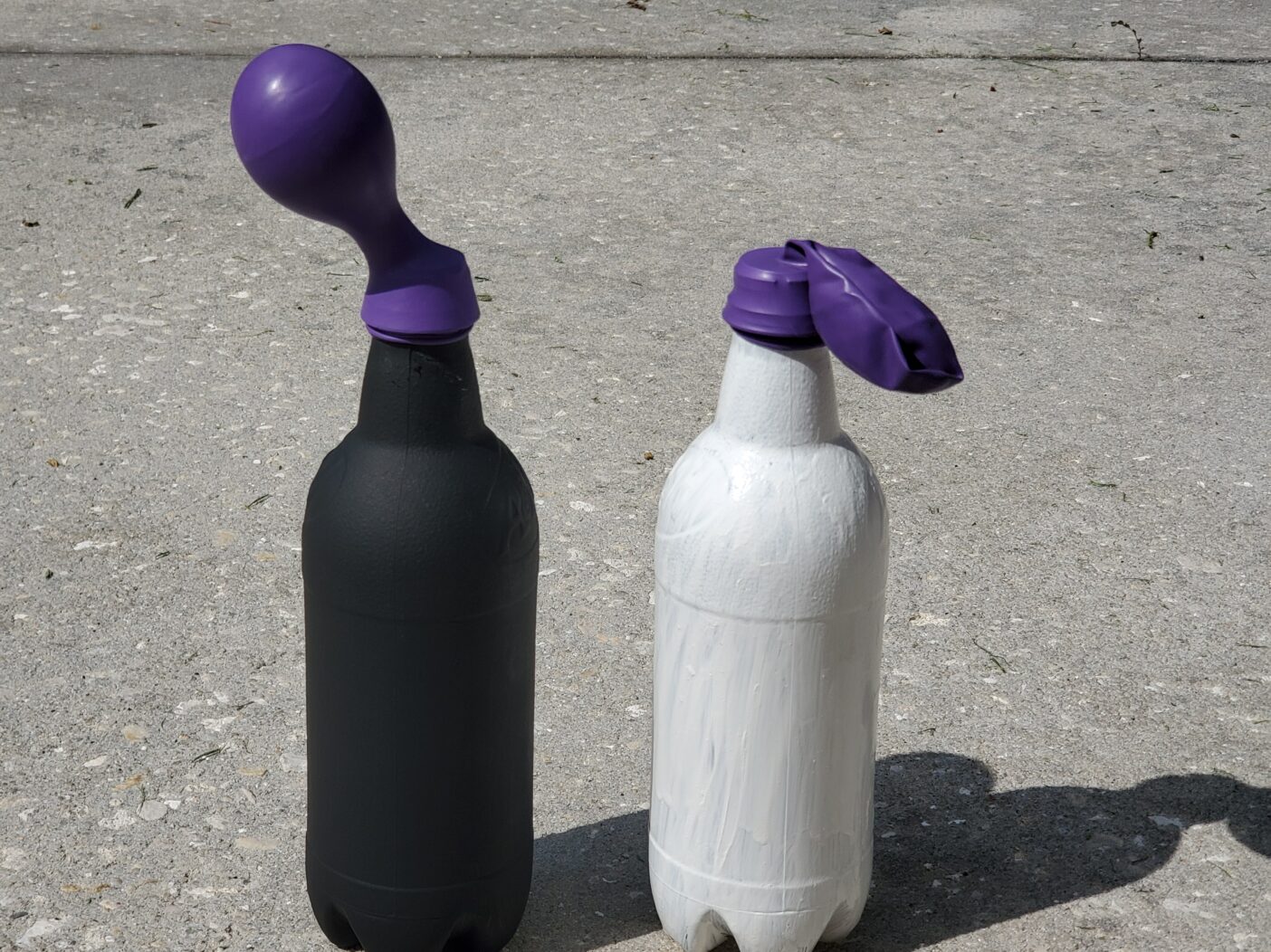
Did you know you can trap heat energy in plastic bottles and harness it to inflate balloons? Try the following experiment to better understand light reflection, absorption, and energy. What does this have to do with plants? Plants use the energy in light to make their food, sugar, in a process known as photosynthesis.
But first, it’s important to understand the colors that illuminate our world are reflections of light. Light contains all visible wave lengths, a rainbow of colors. The color that we perceive an object to be is the color of light that is reflected back from that object. A green shirt, for instance, appears green because it absorbs every color of light except green, which it reflects back to our eyes. The color white reflects all the light that hits it, whereas the color black absorbs all the light that hits it. Because light is a form of energy, light doesn’t disappear when it is absorbed by a black object. Instead, the light is converted to a different form of energy, heat, and then emitted by the black object. That’s why black objects are much hotter in the sunshine than white objects.
Materials:
- 2 empty plastic bottles
- Black acrylic paint
- White acrylic paint
- Paintbrush
- 2 balloons
Instructions:
- Paint one of the plastic bottles white and one of the plastic bottles black.

2. Place a balloon over the mouth of each bottle. Make sure the balloon is sealed over the entire opening so no air can get in or out.
3. Place both bottles in direct sunlight for ten minutes.

4. The balloon on the black bottle should expand and the balloon on the white bottle will stay deflated. Touch each of the bottles. The black bottle will feel warmer than the white bottle because the black bottle is absorbing solar energy while the white bottle is reflecting it. As the black bottle absorbs energy, the air inside the bottle warms up and rises to fill the balloon with air!

 About the Author
About the Author
Emily Kless is Education Programs Assistant for Naples Botanical Garden. Emily is always excited by the opportunity to learn. Outside of the Garden, you can find Emily and her service dog, Clementine, hiking the region’s various trails (and sometimes forging their own) to admire native plants and birds.


